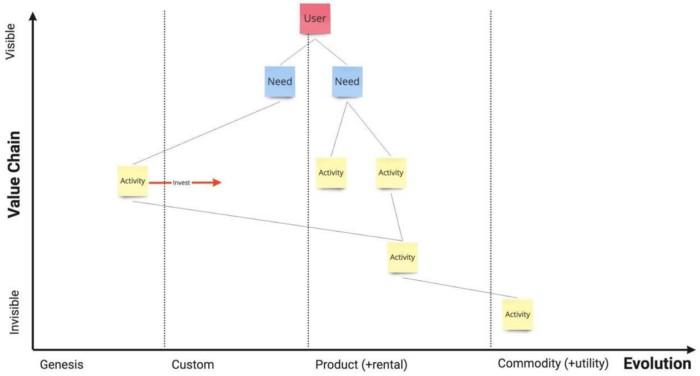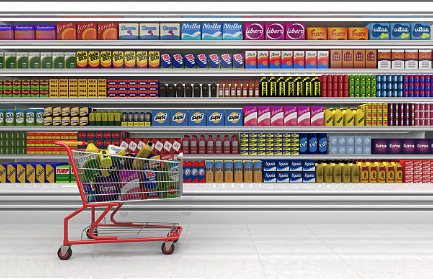Valerie Tremblay
Are You Building a Waterwheel to Power Your Startup?

Waterwheels are 3000 years old! They were invented by the ancient Greeks and powered the Industrial Revolution. In the 18th century, they led to the creation of turbines that performed better and were more practical due to their smaller size. Today, hydroelectricity can provide for complete cities, including your startup’s offices!
Technology is a business enabler. Choosing the right combination of libraries, frameworks, tools, and processes can offer a serious competitive advantage. Plus, it can help in attracting and retaining talents.
But tech can also be exhausting. The pace at which it evolves makes it hard to follow. Keeping up with every new buzz is impossible. Pressure to go faster is high and burnout rate is on the rise.
So where do we go from here? How do we choose to evolve from the waterwheel?
Intro to Wardley Mapping
In a nutshell, Wardley maps offer a methodical way to decide where an organization should focus. On these charts, the user’s need sits at the top and the required modules or activities to serve it (the value chain) are spread on an evolution scale from genesis to commodities.

The idea is that, when serving a user’s need, your attention should be on activities in the genesis or custom evolution stages. Items in the product and commodity phases should be outsourced, rented or bought.
Let’s look at some examples.
Commodities
Building a new piece of software?
Obviously, you rely on electricity, the Internet and a computer. These are all commodities: interchangeable basic utilities, used as input in the production of other goods or services. What you chose here doesn’t matter much. Your competitors have access to the same fungible options. A kW/h of electricity, a Gbit/s of data or a GHz of processor speed.
Most of all, when it comes to commodities, you shouldn’t make your own, unless it’s for a DIY science project or a fun hobby… like building a waterwheel!

Products
With a team working on your idea, you need a few off-the-shelf products. For version control, you choose either GitHub, BitBucket, GitLab or other. For issue tracking, you select Jira, Trello, Notion or an alternative. For communication pick Slack, Teams, Discord or whatever your peers like the most.

For any category, all items serve the same purpose. So decide thoughtfully and stick to your choice unless compelled to switch.
The point here is that, unless that’s specifically the market you’re going after, you shouldn’t build a product that’s available off-the-shelf. Buy or rent it! Your time is better used elsewhere.
Would you build a waterwheel electric generator to power your startup?
In the above, I’ve stated unambiguous examples. Our teams shouldn’t spend their precious time building commodities or products that already exist. Instead, they should concentrate on delivering differentiated value for both the end users and the business.
If you agree that constructing a waterwheel to generate the power for your next startup idea is dumb (but amusing!), then by extension you must concur that managing your servers is also a waste of resources. Cloud computing, just like electricity is now a commodity!
If you agree to pick up renown tools to foster productivity in your organization, then you must approve that developing authentication, file or notification module is a misuse of time and money. Amazon Web Services (AWS) has 200+ services available for rent, sometimes for free.
Electricity enables Internet. Internet enables cloud computing. Cloud computing enables Serverless.
Enter the Serverless Era
In the introduction, I’ve talked about how choosing the right set of tools can provide competitive advantages. Some advantages that Serverless offers are a faster time-to-market, lower infrastructure costs and better focus on user and business value.
Serverless is relatively new. It’s shiny and definitely sounds like a buzzword! But the idea behind the movement is hard to dispute: building on top of existing capabilities allows us to free time and resources for what matters.
It takes a while to learn and get up to speed with developing a cloud native application. By beginning right now, you can be ahead of the pack. So, follow me and start your Serverless journey now!